Sea People
Q193850Sea People: name of several groups of marauders, mentioned in several Egyptian sources as enemies of king Merenptah (r.1213-1203 BCE) and king Ramesses III (r.1184-1152). Their appearance is related to the demise of the Mediterranean Bronze Age system in the first half of the twelfth century BCE.
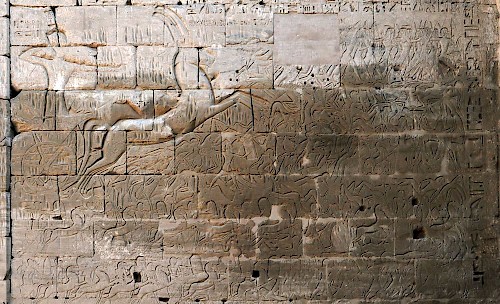
The people “from the lands across the sea” are mentioned in several Egyptian texts from the Nineteenth and Twentieth Dynasties as enemies of king Merenptah (r.1213-1203 BCE) and king Ramesses III (r.1184-1152). Modern scholars have combined these references with the widespread destruction that took place in the first half of the twelfth century in the eastern Mediterranean, and have attempted to identify the seaborne attackers with nations and tribes known from other sources. Some of these identifications sound plausible while others remain purely hypothetical.
Merenptah’s Enemies
In his fifth regnal year (probably 1209/1208 BCE), king Merenptah fought against Libyan invaders who were supported by northern allies.note Almost by definition, these allies must have arrived from beyond the sea. Among these is a group that is called Ekweš. This word may be identical to the Ahhijawa known from Hittite sources, who in turn can be identified with the Achaeans or Greeks. It will be obvious that this identification is quite hypothetical. On the other hand, Mycenaean mercenaries may well have joined Libyan armies.
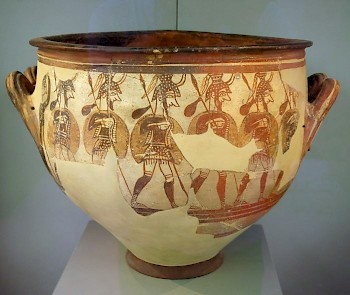
The next nation among the Libyan allies, the Šerden, are also mentioned in the Amarna Letters: they were guardians, serving the princes of the Levant. They also served in the armies of Merenptah’s father Ramesses II. On reliefs, they are shown with horned helmets, round shields, and swords, not unlike some Mycenaean Greeks. (It must be stressed that the use of these weapons was not limited to the Greeks.)
Among the other allies of the Libyans are the Lukka people, who must be identical to the Lycians. We also learn about the “Tereš of the sea” (Turša) and the Šekeleš. The latter are also known from a letter, sent in about 1200 BCE by the king of Karchemish to the ruler of the port of Ugarit, that mentions one Lunadušu who had visited the “Šikala who live on ships” and now had to be sent to Karchemish to report about these enemies and their country.note
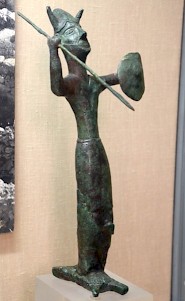
From all this, we can deduce that Ekweš, Lycians, Šerden, Šekeleš, and Tereš were bands of seaborne warriors. It would be exaggerated to talk about migrating tribes. (Although claims have been made, it is highly hypothetical that the Šerden, Šekeleš, and Tereš ultimately settled in the west and can be identified with Sardinia, Sicily, and the Tyrrhenians/Etruscans.)
Ramesses’ Enemies
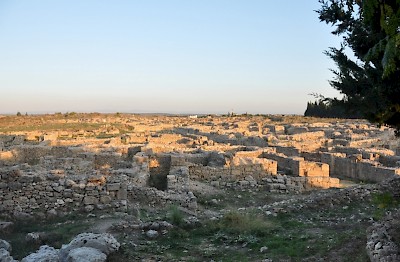
In the eighth year of Ramesses III (probably c.1177 BCE), a different group of Sea People arrived in Egypt. This time, they were not the allies of the Libyans, but an independent army. In the royal inscription in his temple at Medinet Habu (i.e., western Thebes) and the Harris Papyrus, the king tells us that the enemies had already overthrown the Hittite Empire and had also attacked Arzawa (in western Turkey), Alashiya (i.e., Cyprus), Qedi (i.e., Cilicia), and the kingdom of Karchemish in northern Syria. There may be archaeological confirmation: Ugarit in Syria and Enkomi on Cyprus were indeed destroyed, while the Hittite capital Hattusa was abandoned. It must be noted, however, that the evacuation of Hattusa was not caused by seaborne attackers, but by Kaska people from northern Anatolia.
According to the same Egyptian texts, the Sea People united in the land of the Aramaeans (i.e., Syria) and made plans to attack Egypt. Five groups of Sea People were involved: the Šekeleš/Šikala we already met, the Denyen, the Peleset, the Tjeker, and the Wešweš. Ramesses III managed to defeat them somewhere on the Egyptian frontier, but a second group, which included the Šerden and the Tereš again, arrived by sea, to be defeated by the king in a naval battle.
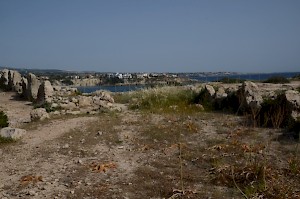
The relief in Medinet Habu clearly shows that the first group of attackers did not consist of warriors only: on wagons, they took their wives and children with them. These were not just warriors, but were immigrants.
It has been assumed that behind the Denyen are the Danaoi, a name used by Homer to describe the Greeks. This identification, although based on the similarity of the two words only, cannot be excluded, because there is corroborating evidence from Karatepe-Aslantaş, while it is certain that there were problems in the Mycenaean world. In the mid-thirteenth century, Thebes, Gla, and Orchomenos had been destroyed, the second half of the thirteenth century witnessed the constuction of large "cyclopic" walls in the other Mycenaean towns; in the first quarter of the twelfth century, towns like Mycenae abd Pylos were destroyed; at least some groups of Greeks migrated to Cyprus (e.g., to Maa-Palaiokastro and Enkomi). They may well have moved beyond this island, to the Levant and Egypt.
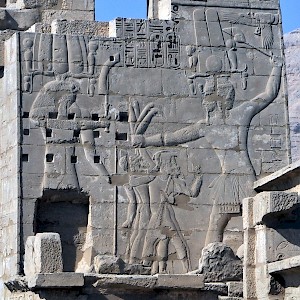
Something similar can be said about the Peleset, who are better known as the Philistines mentioned in the Bible. Although we do not know where they came from, they certainly were foreigners in the Near East. The Bible refers to them as Cretansnote and their pottery resembles late Mycenaean pottery. In the eleventh century BCE, the Peleset and Tjeker were living in the coastal cities of what is now Israel. (The name "Palestine" is derived from "Peleset".)
The End of the Bronze Age
In modern scholarly debates, the Sea People have received much attention, because it was believed that their attacks caused the demise of the Bronze Age system. However, the story must be more complex than this. As indicated, it was not the Sea People but the Kaska people who made the Hittites abandon their capital. It remains to be seen whether the “Sea People” caused the destruction or that their wanderings were the consequence of an earlier collapse. There certainly was a climate anomaly.
Initially, the Sea People must have been small bands like the Ekweš warriors who joined the Libyans. Later, more people started to look for a better future: migrating nations like the Denyen. If the words "Ekweš" and "Denyen" indeed both refer to people from Greece, the name change may document an ethnic change in Greece after the collapse of the Myceanaean palaces.
Literature
- Eric Cline, 1177 B.C.: The Year Civilization Collapsed (2014)